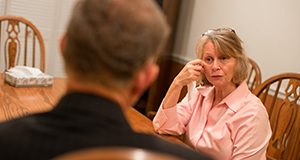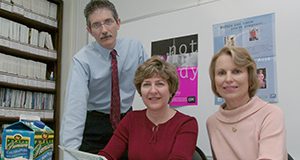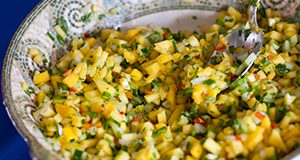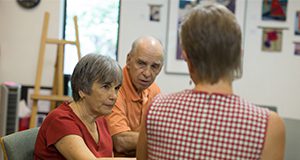 People are frequently at a loss for the best way to begin a discussion about end-of-life concerns with loved ones and health care providers and are also unsure of the topics they should cover. Nonetheless, conversations about end-of-life care and advance directives can help ensure that the person’s wishes are honored. These measures also eliminate much of the difficult decision-making that loved ones typically face at the time of their loved ones’ passing. This 5-page fact sheet, part of a new series entitled The Art of Goodbye, discusses the barriers to discussing the end of life and the process of communication with loved ones and health care providers. Written by Suzanna Smith, Lynda Spence, and Chelsea Tafelski, and published by the UF Department of Family, Youth and Community Sciences, October 2016.
People are frequently at a loss for the best way to begin a discussion about end-of-life concerns with loved ones and health care providers and are also unsure of the topics they should cover. Nonetheless, conversations about end-of-life care and advance directives can help ensure that the person’s wishes are honored. These measures also eliminate much of the difficult decision-making that loved ones typically face at the time of their loved ones’ passing. This 5-page fact sheet, part of a new series entitled The Art of Goodbye, discusses the barriers to discussing the end of life and the process of communication with loved ones and health care providers. Written by Suzanna Smith, Lynda Spence, and Chelsea Tafelski, and published by the UF Department of Family, Youth and Community Sciences, October 2016.
http://edis.ifas.ufl.edu/fy1470
Tag: Family Youth and Community Sciences Department
The Art of Goodbye: Why People Are Talking About the End of Life
 Mortality has been a taboo subject for many years. Many cultural, demographic, educational, and policy changes have played a part in a shift toward an increased openness to talking about death as a natural part of life in the United States. This 5-page fact sheet is the first publication in a new series entitled The Art of Goodbye, and it covers changes in living and dying, preferences for the end of life, roles of substitute decision makers in health care, and communication. Written by Suzanna Smith and Lynda Spence, and published by the UF Department of Family, Youth and Community Sciences, October 2016.
Mortality has been a taboo subject for many years. Many cultural, demographic, educational, and policy changes have played a part in a shift toward an increased openness to talking about death as a natural part of life in the United States. This 5-page fact sheet is the first publication in a new series entitled The Art of Goodbye, and it covers changes in living and dying, preferences for the end of life, roles of substitute decision makers in health care, and communication. Written by Suzanna Smith and Lynda Spence, and published by the UF Department of Family, Youth and Community Sciences, October 2016.
http://edis.ifas.ufl.edu/fy1468
The Art of Goodbye: Exploring Health Concerns
Issues and questions about care at the end of life are as unique and complex as the individual receiving care. The condition and culture of the patient and family, religion, spirituality, education, occupation, social class, friends, and personal preferences can affect end-of-life care. Sometimes decisions are made by the individual patient. At other times, the family and health care providers are involved. This 6-page fact sheet, part of a new series entitled The Art of Goodbye, explores health concerns and discusses aspects and types of care at the end of life. Written by Lynda Spence, and published by the UF Department of Family, Youth and Community Sciences, July 2016.
http://edis.ifas.ufl.edu/fy1467
The Art of Goodbye: Exploring Self-Reflection
Many people assume that preparing for the end of life involves filling out forms at the doctor’s or lawyer’s office. Forms and checklists have their place and can be helpful, but they cannot address every issue because end-of-life concerns are complicated. Self-reflection is a helpful tool that begins to lay a foundation for planning while articulating people’s complex and unique emotions, values, priorities, fears, and preferences when it comes to facing their own mortality. This 4-page fact sheet is the second publication in a new series entitled The Art of Goodbye, and it covers resources that can help individuals explore their personal concerns and values before initiating end-of-life discussions with loved ones. Written by Lynda Spence and Chelsea Tafelski, and published by the UF Department of Family, Youth and Community Sciences, July 2016.
http://edis.ifas.ufl.edu/fy1465
Grandparents Raising Grandchildren: Custody Options
 Grandparents have several custody options when they are caring for their grandchildren. To decide which options match your needs, you must become familiar with legal terms. This brochure provides information on custody options, situation scenarios, and legal resources. Written by Larry F. Forthun and Millie Ferrer-Chancy with assistance from the Legal Aid Foundation, and published by the UF Department of Family, Youth and Community Sciences. Revised December 2015.
Grandparents have several custody options when they are caring for their grandchildren. To decide which options match your needs, you must become familiar with legal terms. This brochure provides information on custody options, situation scenarios, and legal resources. Written by Larry F. Forthun and Millie Ferrer-Chancy with assistance from the Legal Aid Foundation, and published by the UF Department of Family, Youth and Community Sciences. Revised December 2015.
http://edis.ifas.ufl.edu/fy433
Guidelines for Operation and Usage of County Kitchens in the State of Florida
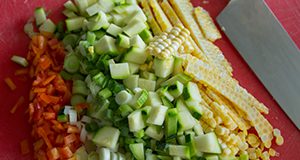 In recent years, many people have become interested in developing small food businesses. Using county kitchens to make food products for sale may seem very attractive. However, because of different local, state, and federal regulation requirements, there may be some confusion and unresolved conflicts among different parties as to the legalities and practicalities involved. This 3-page fact sheet provides guidelines and advice for Florida Extension personnel to use when determining the appropriate usage for their kitchen facilities, based on a situation in one Florida county. The publication covers utilization, roles and responsibilities, and potential liability issues relevant to the use of county kitchens, providing some potential solutions to conflicts for all parties. Written by Amarat Simonne, Tim Wilson, Geralyn Sachs, Joanne Cooper, Brenda Morris, Steven von Bodungen, and Liz Felter, and published by the UF Department of Family, Youth and Community Sciences, August 2016.
In recent years, many people have become interested in developing small food businesses. Using county kitchens to make food products for sale may seem very attractive. However, because of different local, state, and federal regulation requirements, there may be some confusion and unresolved conflicts among different parties as to the legalities and practicalities involved. This 3-page fact sheet provides guidelines and advice for Florida Extension personnel to use when determining the appropriate usage for their kitchen facilities, based on a situation in one Florida county. The publication covers utilization, roles and responsibilities, and potential liability issues relevant to the use of county kitchens, providing some potential solutions to conflicts for all parties. Written by Amarat Simonne, Tim Wilson, Geralyn Sachs, Joanne Cooper, Brenda Morris, Steven von Bodungen, and Liz Felter, and published by the UF Department of Family, Youth and Community Sciences, August 2016.
http://edis.ifas.ufl.edu/fy1469
The Art of Goodbye: Planning Final Arrangements
The consumer is faced with complex personal decisions while making final arrangements. Final arrangements might include a religious ritual, service, tribute, funeral, and/or burial. This 7-page fact sheet, part of a new series entitled The Art of Goodbye series, is designed to help in the development of a final arrangements plan using a coordinated approach. This document discusses the Funeral Rule, determinants, funeral providers, types of final arrangements, tissue or organ donation, body donation, preplanning, and prepaying. Written by Lynda Spence, and published by the UF Department of Family, Youth and Community Sciences, July 2016.
http://edis.ifas.ufl.edu/fy1466
Prevencion de Caidas: Estilos de vida y riesgo de caidas
Hay muchos factores que pueden contribuir a las razones por las que usted se cae, pero algunos de éstos, los puede cambiar. A continuación le ofrecemos algunos cambios sencillos que puede hacer para reducir el riesgo de caerse.
This 2-page fact sheet is a major revision of the Spanish version of FCS2230/FY736:Fall Prevention: Lifestyle Factors and Fall Risk. Written by Linda B. Bobroff, and published by the UF Department of Family, Youth and Community Sciences, revised April 2016.
http://edis.ifas.ufl.edu/fy860
Registration and Licensure of Nutrition Professionals in Florida
Consumers need to know who is qualified to practice nutrition or dietetics before seeking nutrition advice. This 3-page fact sheet is a major revision that provides information about dietetic registration and licensure. Written by Linda B. Bobroff, and published by the UF Department of Family, Youth and Community Sciences, revised June 2016.
http://edis.ifas.ufl.edu/fy690
Vida Saludable: Fuentes de informacion sobre la diabetes
Muchos recursos sobre la diabetes se encuentra en línea.
This 2-page fact sheet provides a list of resources with information on diabetes. Written by Linda B. Bobroff and Paulina Wittkowsky, and published by the UF Department of Family, Youth and Community Sciences, revised August 2015.
http://edis.ifas.ufl.edu/fy083
Healthy Eating: Meals Without Cooking
This 2-page fact sheet is a major revision featuring a fun word search and a delicious recipe that requires no cooking. Written by Linda B. Bobroff, and published by the UF Department of Family, Youth and Community Sciences, revised July 2016.
http://edis.ifas.ufl.edu/fy1215
Caregivers, Caseworkers, and Biological Parents: Risk Factors for Foster Teen Pregnancy and Ways You Can Make a Difference
Many teens exhibit risk-taking behavior. That said, the past experiences of foster care youth in particular make them likely to engage in activity that could cause teen pregnancy and sexually transmitted infections. This 9-page fact sheet is designed to provide kin and foster caregivers, caseworkers, and biological parents of children in foster care with information about the physical, emotional, and psychological concerns related to teen reproductive health in the foster care system. It also aims to help all involved identify the risk factors associated with foster teen pregnancy and explains legal rights regarding foster teen health. Written by Nora Del Giudice, Stephanie C. Toelle, David C. Diehl, and Jody S. Nicholson, and published by the UF Department of Family, Youth and Community Sciences, May 2016.
http://edis.ifas.ufl.edu/fy1464
Healthy Eating: Fluids
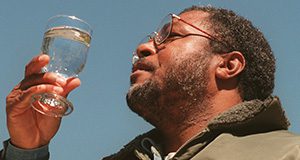 More than one-half of an adult’s body weight is water. Water brings nutrients to the cells in our bodies and removes waste. Our bodies cannot function if they do not receive enough water. This 2-page fact sheet is a major revision that addresses the importance of water to physical functions, effects of dehydration, risk factors for dehydration in older adults, and fluid intake suggestions. Written by Linda B. Bobroff, and published by the UF Department of Family, Youth and Community Sciences, revised June 2016.
More than one-half of an adult’s body weight is water. Water brings nutrients to the cells in our bodies and removes waste. Our bodies cannot function if they do not receive enough water. This 2-page fact sheet is a major revision that addresses the importance of water to physical functions, effects of dehydration, risk factors for dehydration in older adults, and fluid intake suggestions. Written by Linda B. Bobroff, and published by the UF Department of Family, Youth and Community Sciences, revised June 2016.
http://edis.ifas.ufl.edu/fy070
Fall Prevention: Home Safety Inventory
 Most falls occur in the home, so it is wise to take time to do a home safety inventory. This 2-page fact sheet is a major revision that can be used to identify problem areas in your home. Written by Linda B. Bobroff, and published by the UF Department of Family, Youth and Community Sciences, revised July 2016.
Most falls occur in the home, so it is wise to take time to do a home safety inventory. This 2-page fact sheet is a major revision that can be used to identify problem areas in your home. Written by Linda B. Bobroff, and published by the UF Department of Family, Youth and Community Sciences, revised July 2016.
http://edis.ifas.ufl.edu/fy735
Diabetes-Related Websites
Managing diabetes requires learning about your disease, making positive lifestyle choices, and being a partner with your health care team. Finding and using current and reliable sources of health information on the Internet also helps you make choices that support your health while avoiding potentially harmful products and practices. This 1-page fact sheet is a major revision that provides links to government, educational, and recognized professional websites on diabetes. Written by Linda B. Bobroff and Nancy J. Gal, and published by the UF Department of Family, Youth and Community Sciences. Revised May 2016.
http://edis.ifas.ufl.edu/fy1103
Vivir con Diabetes
La diabetes es una enfermedad que afecta a más de 29 millones de estadounidenses. Aunque no existe cura para tipo 1 o tipo 2 diabetes, con los cuidados necesarios se puede controlar la enfermedad.
This 5-page fact sheet is the Spanish version of Living with Diabetes. This major revision provides an overview of diabetes, a list of people at high risk of developing the disease, and a description of each type of diabetes. It also discusses tests, possible health problems, control of blood glucose, and diabetes management. Written by Nancy J. Gal and Linda B. Bobroff, and published by the UF Department of Family, Youth and Community Sciences, revised May 2016.
http://edis.ifas.ufl.edu/fy924
Healthy Living: Taking Care from Head to Toe
If you have diabetes, pay special attention to your skin, eyes, teeth, gums, and feet. These areas are at high risk for complications. This 3-page fact sheet is a major revision that gives helpful information on ways to take care of these areas to reduce the risk of diabetes-related complications. Written by Linda B. Bobroff, and published by the UF Department of Family, Youth and Community Sciences, revised May 2016.
http://edis.ifas.ufl.edu/fy886
Healthy Eating: Improving Your Convenience Foods
 Convenience foods are foods that require little preparation. Some convenience foods only require heating and are ready to eat in less than five minutes! The majority of convenience foods are processed foods. However, precut, prewashed, frozen, and canned fruits and vegetables also can be classified as convenience foods. They are healthy foods but are usually more expensive than less prepared fresh fruits and vegetables. This 2-page fact sheet is a major revision that discusses pros and cons of convenience foods, improvement of nutritional quality, common convenience foods and easy additions, and additional tips. Written by Emily Minton and Linda B. Bobroff, and published by the UF Department of Family, Youth and Community Sciences, revised March 2016.
Convenience foods are foods that require little preparation. Some convenience foods only require heating and are ready to eat in less than five minutes! The majority of convenience foods are processed foods. However, precut, prewashed, frozen, and canned fruits and vegetables also can be classified as convenience foods. They are healthy foods but are usually more expensive than less prepared fresh fruits and vegetables. This 2-page fact sheet is a major revision that discusses pros and cons of convenience foods, improvement of nutritional quality, common convenience foods and easy additions, and additional tips. Written by Emily Minton and Linda B. Bobroff, and published by the UF Department of Family, Youth and Community Sciences, revised March 2016.
http://edis.ifas.ufl.edu/fy1312
School Gardens: A Growing Part of Schools

School gardens have been popping up like little pea plants in schools all over Florida. Not only are they an excellent way to get fresh produce into classrooms and cafeterias, but they also provide students with a living classroom where concepts related to science, math, agriculture, and nutrition can be learned and applied. This 4-page fact sheet discusses the benefits of school gardens to children and teachers, different types of school gardens, and points to consider while planning. Written by Kohrine Counts and Karla P. Shelnutt, and published by the UF Department of Family, Youth and Community Sciences, February 2016.
http://edis.ifas.ufl.edu/fy1463
Breast Cancer: Preparing for Surgery
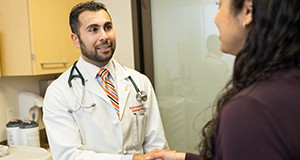 Once you and your doctor schedule your breast cancer surgery, you may have additional questions about how you can prepare for your operation. This 5-page fact sheet provides information to help you get ready for breast cancer surgery through a brief overview of common surgical options, medical appointments, social support systems, and standard surgical procedures as well as reactions and memories of women who have gone through this experience. Written by Martha C. Monroe and Barbara F. Shea, and published by the UF Department of Family, Youth and Community Sciences. Revised February 2016.
Once you and your doctor schedule your breast cancer surgery, you may have additional questions about how you can prepare for your operation. This 5-page fact sheet provides information to help you get ready for breast cancer surgery through a brief overview of common surgical options, medical appointments, social support systems, and standard surgical procedures as well as reactions and memories of women who have gone through this experience. Written by Martha C. Monroe and Barbara F. Shea, and published by the UF Department of Family, Youth and Community Sciences. Revised February 2016.
http://edis.ifas.ufl.edu/fy899
